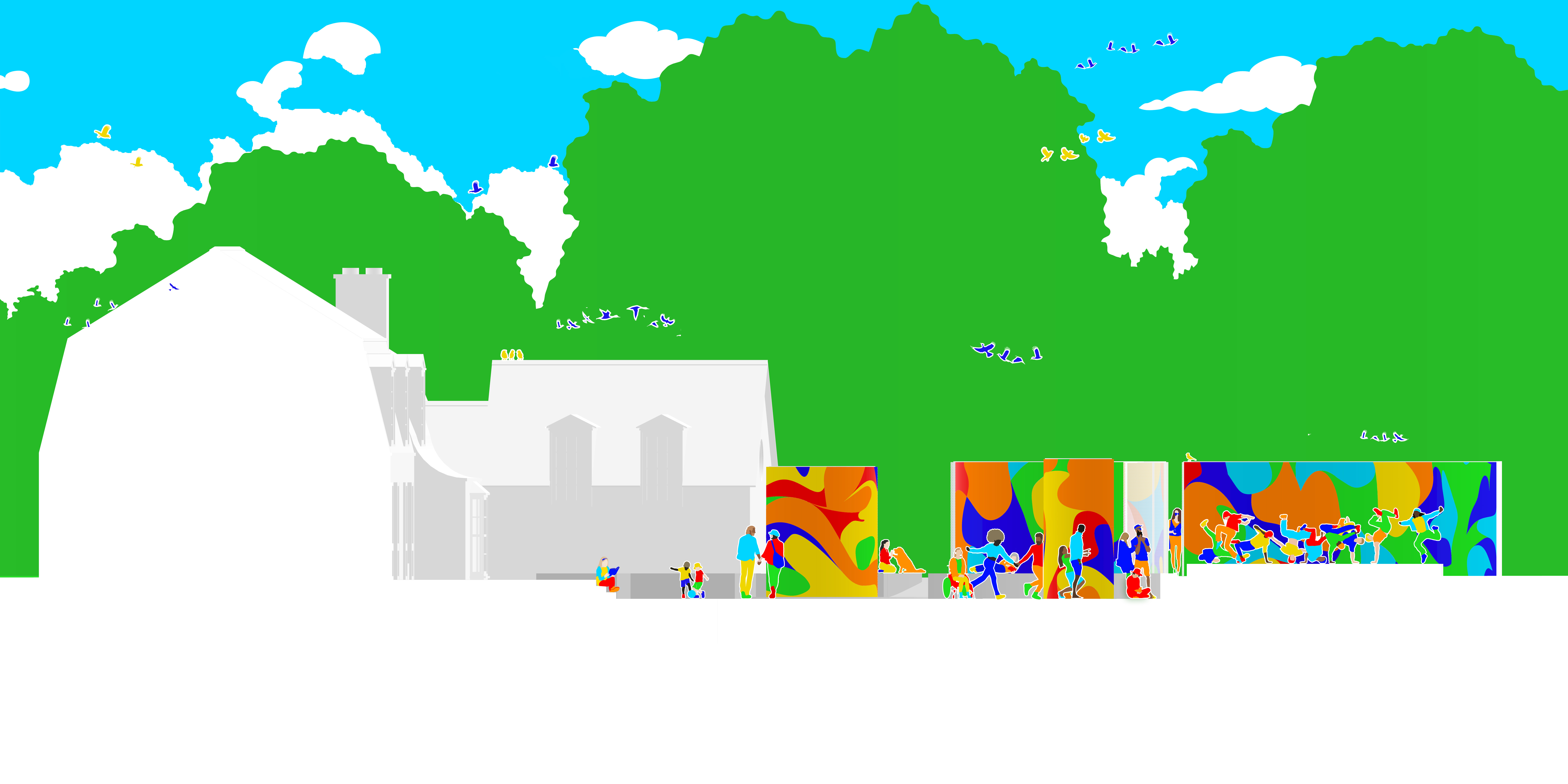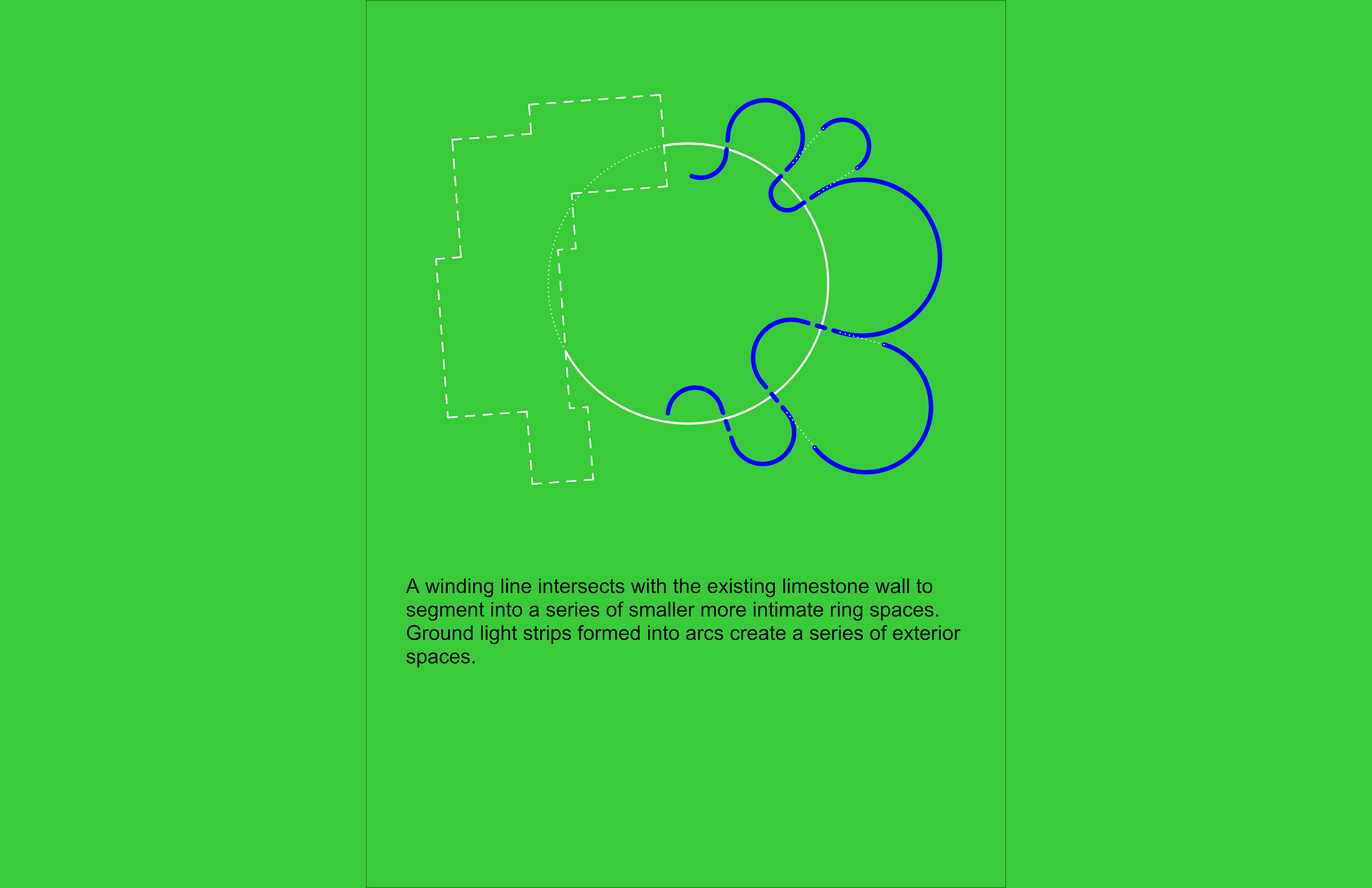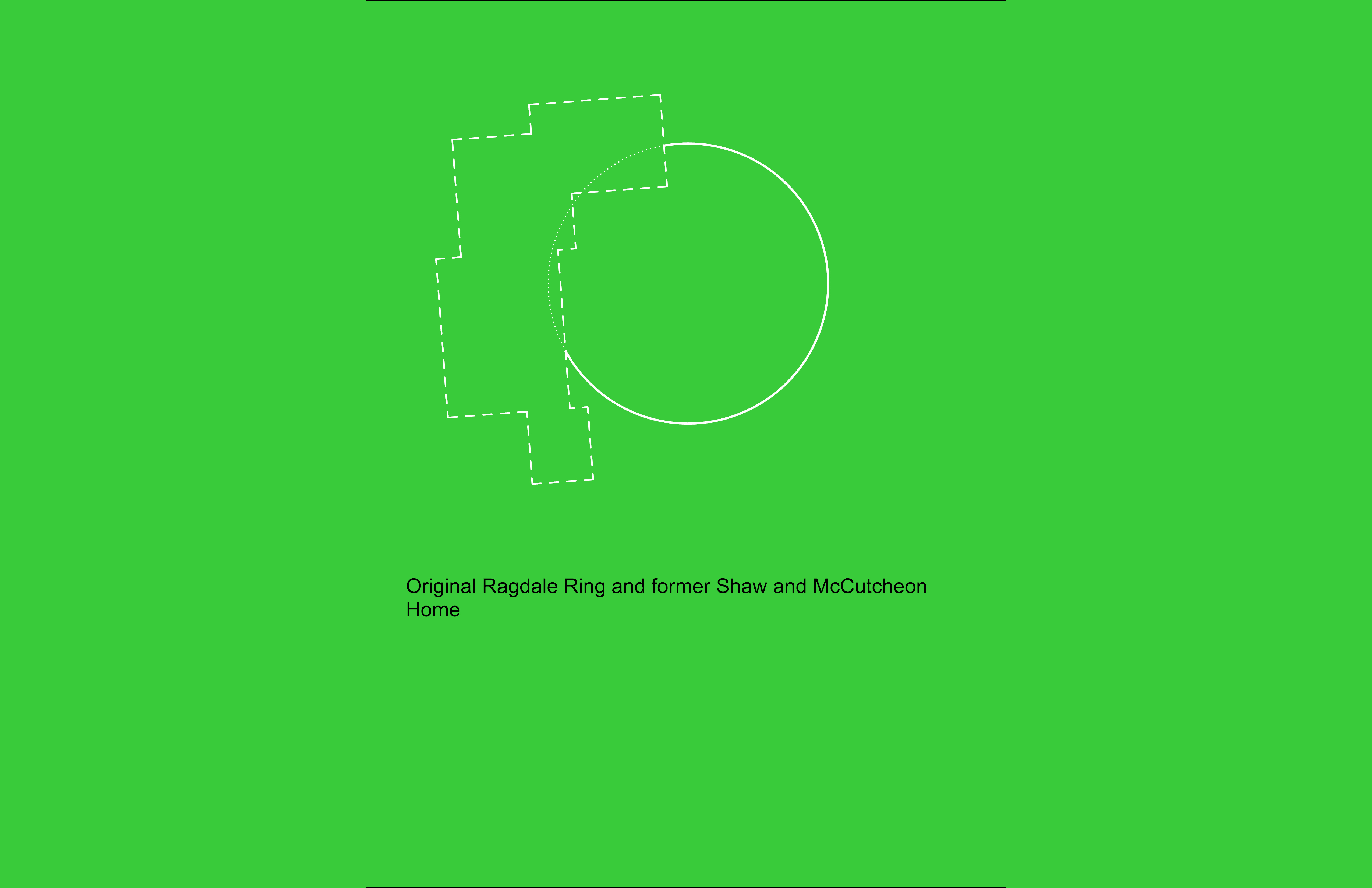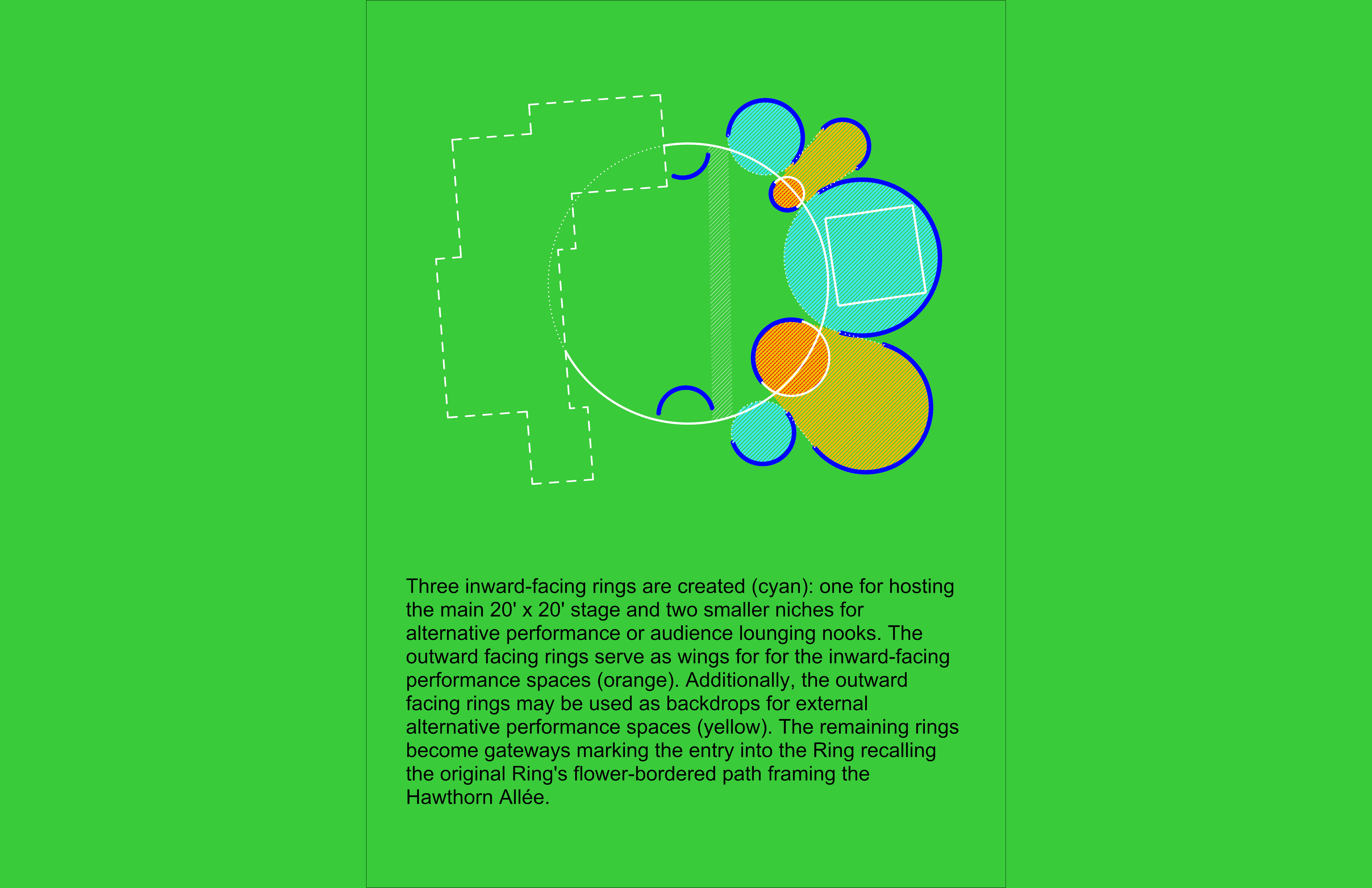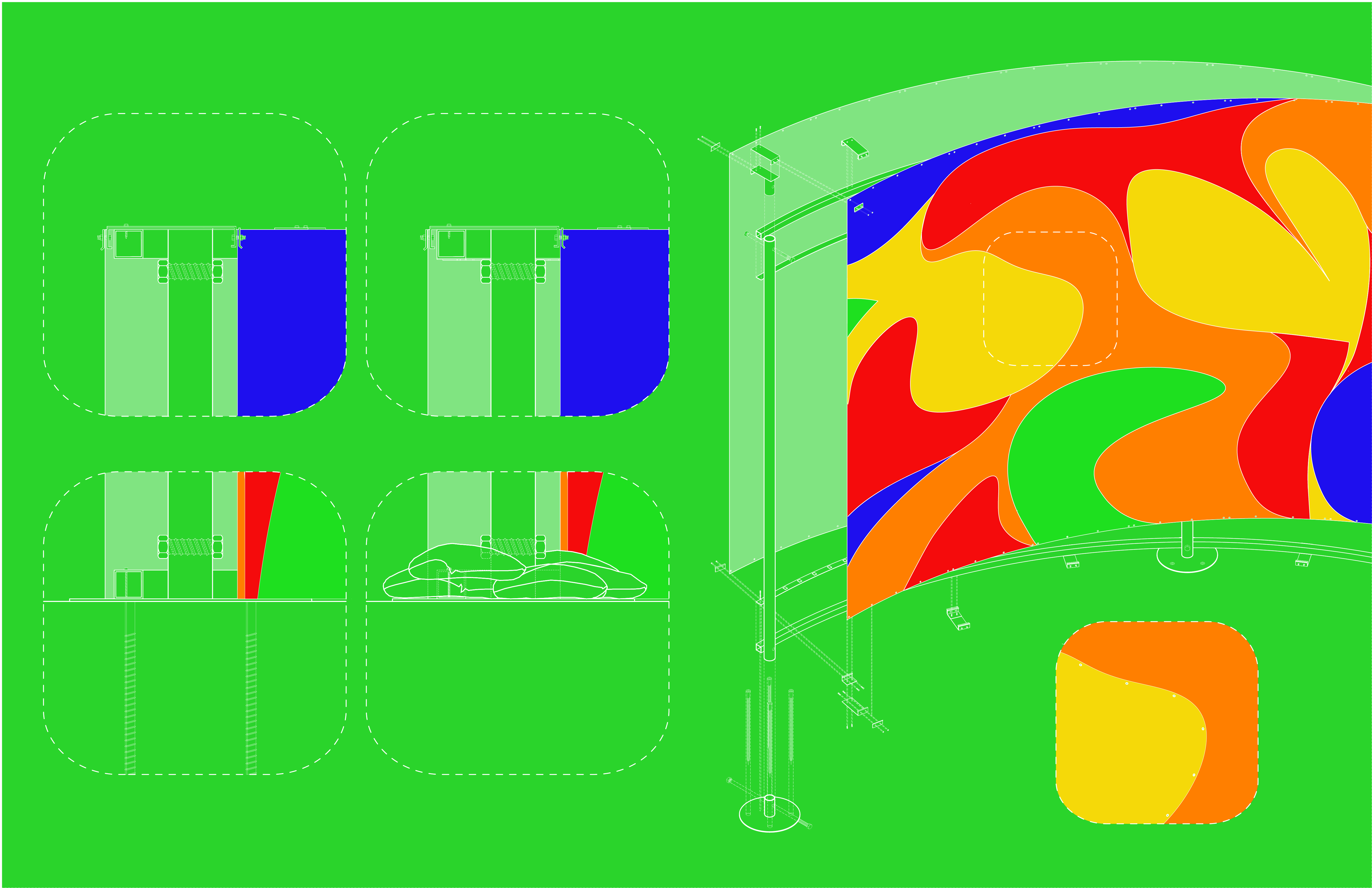Projects
Holding Pattern
JE-LE + PAL
Through layered and undulating surfaces, our proposal uses color and light to suggest intimacy and ambiguous readings between nature and scenography. The project consists of a collection of simple, semi-circular frames that support a double layer of fabric, which can be illuminated from within, and enclose diverse scales of performance. One side is a custom, high-contrast pattern designed to obscure edges between the natural and synthetic and between the physical and digital. The other side is a white mesh fabric that softens and blurs the inner ring of vibrant hues. The undulating curved surfaces create a background for the main 20’ x 20’ stage and a series of smaller areas that can be used for more intimate performances, backstage areas for performers and equipment, or places to wander through, explore, and linger.
Technology: Placeholding
The proposed installation investigates the capacity of “placeholding” in architecture: how design tactics, including the use of new media and technology, might leave (both physical and conceptual) space for participants and publics to engage on their own terms; thus expanding and democratizing architecture’s role as a device for inclusion. The applicants have developed a digital interface to expand on more traditional uses of Chromakey technology and will provide a series of digital backgrounds that artists and visitors can use to customize their experience. This digital interface is another take on the theme of intimacy, where the ability to alter one’s own environment can create other forms of familiarity unique to the performer. Our team proposes to generate custom backdrops and animated videos in consultation with performers during Summer 2023.
Chroma key is the electronic compositing of two images together according to a color range, seemingly forges two simultaneous realities—one digital and one physical—through a singular act of removal. The patterned backdrop, consisting of high-contrast color figures, enables chroma keying to occur selectively via a custom app. The resulting digital overlays further the capacity for the pattern to “hold space” for individual expression. In this capacity, the space of chromakey is also an interlocutor between the physical and the digital.
Please reference Prom Picture and our team’s contribution to the Postcommodities Symposium in the work sample to see how we have explored how the chroma-keyed landscape not only produces new subjectivities, but new subjects and individuated agencies through a call for the design of gaps, leaving space, and of placeholders.
Organization: Intimate Rings
Along with the ephemeral qualities that color and light afford in the project, the theme of intimacy is also embraced through the organizational strategy. The constructed series of rings hug the historic ring edge, creating a more ambiguous threshold between the inside and outside the ring. The double-sided nature of the project implies an inner ring, saturated with color, that frames a space for both artist and audience, and an outer threshold that softens and blurs typical programmatic distinctions (ie: backstage, artist, and audience). This edge is meant to be porous and can be used in a variety of ways depending on the nuances of the performance or artistic work that is being shared.
Lighting & Sound: Ephemerality
In the article, "Ragdale Ring: A Garden Theater of Intimate Type," William D. Popham attributes much of the original Ragdale Ring design’s success to its use of layered light, which guided visitors along the entry path, illuminated the audience with accent lighting in the pre-performance moments, and shifted to focused lighting to accentuate the stage when the performance began. Floodlights for the stage were discreetly positioned in the “green” wings and other strategic locations in a variety of colors and with dimmers. The ability of lighting to indicate the changing moments in theater and quietly direct the audience's attention will drive the way we conceive of light within our proposal.
Lighting is integrated into the design project and is an important element that aids in the momentary and fleeting qualities that shape intimacy. A track between the layers will enable the fabric panels to be illuminated from within, providing a soft glow on the outer periphery. Select areas of the figures within the pattern in the main stage area will be translucent and lit to appear as if glowing (see Night Performance Rendering). Additional LED lights are proposed to be installed along the ground to imply outer ring performance spaces embedded within the natural setting. All lights will use Arduino boards, a cost-effective way to control the lights and create different lighting conditions depending on the artist’s intended vibe. Small spaces (that can be covered in the event of rain) are provided adjacent to the main stage that can be used for additional lights and speakers.
Materiality & Reuse
The structure is designed to be completely disassembled into parts that can be reused for future installations. The applicants have a future project that can support the reuse of material and reconfiguration of a series of “outdoor classrooms” on their institution’s campus quad. The reconstruction of the project will be part of an initiative that the applicant has been approved for, to create mentorship experiences with high school students through creative-build experiences. The project’s form, construction logic, and aesthetic qualities will introduce architectural thinking that empowers students to engage with their built and educational environments in alternative ways. The installation will serve as a collection of spaces for impromptu meetings or outdoor classes for faculty and students.


